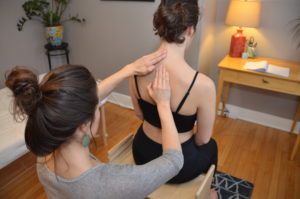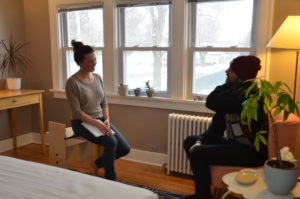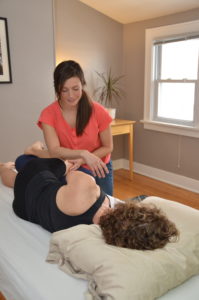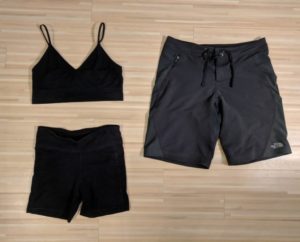Frequently Asked Questions
What is Rolfing?
Developed by Dr. Ida Rolf in the 1970’s, Rolfing is a hands-on therapy that uses touch, directed movement and language to bring awareness and ease to the body. Rolfing is different than a massage therapy session. The client is an active participant in a Rolfing session, whether doing movement while the practitioner works on the tissue, breathing into an area so that attention and presence is brought to the area being worked on, or walking around the room so the practitioner can evaluate patterns present in the body.
Rolfing is a hands-on approach to the body that works to release deeply established patterns of tension and strain. Rolfing practitioners use refined and intentional touch to reshape, align, and balance the body. Rolfers work with a whole-body approach to enhance ease of movement, comfortable alignment, and overall wellbeing. Through this process individuals learn more about their body and how it functions.
Rolfing systematically addresses the entire body by manipulating its network of connective tissue, or fascia. Fascia is what gives the body its form. As it is affected by habitual movement patterns, stress, injuries, and traumatic experiences, patterns of discomfort can arise in the structure of the body. As Rolfing practitioners slowly apply directed pressure, these patterns can change and reorganize. Throughout the Rolfing series, people experience improved alignment and develop more awareness of their body, as the practitioner and client work together to reposition the structure of the body.
What should I expect during a session?
Sessions will begin with several intake questions along with a few brief assessments that might include walking around the room, arm raises, or knee bends. This gives the practitioner and the client an idea of existing movement patterns. This is often followed by hands-on work on the table in which the practitioner might ask for movement or breath from the client while working with the tissue and create a dialogue around what the client is noticing in their body. It may appear like a massage, however, the client is more active and engaged in the session. After work on the table, seated benchwork might take place or bringing the work to a standing position. The session often is concluded with a conversation around what new awareness the client can take with them or pay attention to in the future.
Is it painful?
Rolfing has a reputation for being painful, and in the past it was. When Dr. Rolf developed the modality, our scientific understanding was that the practitioner needed to manually separate layers of tissue. We now understand that the practitioner must correspond with the client’s nervous system in order to affect change. Therefore, it is important that we do NOT cause pain when working. If you’re seeking an extremely deep-pressure massage, Rolfing® may not be for you. You may like Rolfing if you’re seeking relief from recurring or chronic pain, if you want to improve your posture and range-of-motion, or if you want to increase your body awareness and efficiency.
Rolfers have developed a refined sense of touch when working with the body. Their spectrum of touch can range from a listening touch with light pressure to a more direct touch with deeper pressure. The most important part is that the client is comfortable with the touch, and the practitioner will adjust to meet the client’s needs.
What do I wear during a session?
A Rolfing session typically begins and ends with a few minutes of visual assessment, where you’ll stand and walk around the room. Most clients wear athletic shorts and a unrestrictive bra since it allows for a more detailed assessment. It also allows the Rolfer access to your back and ribs during the session. However, the greatest priority is that you are comfortable, so please let me know if you have any questions. Women often wear athletic or yoga shorts and an unrestrictive bra and men wear boxers, briefs, or athletic shorts.
Who can benefit from Rolfing?
People of all kinds can benefit from Rolfing – infants to elders, small to large, and active to inactive. Rolfing can benefit those in pain, those seeking a deeper connection to their body, and those that want to feel better.
How long are the sessions?
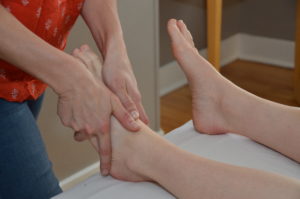 Each session can vary in length depending on the goals and needs of the client and the territory covered. Generally, sessions will range from 60 to 90 minutes. You will find that some sessions are longer or shorter than others.
Each session can vary in length depending on the goals and needs of the client and the territory covered. Generally, sessions will range from 60 to 90 minutes. You will find that some sessions are longer or shorter than others.
